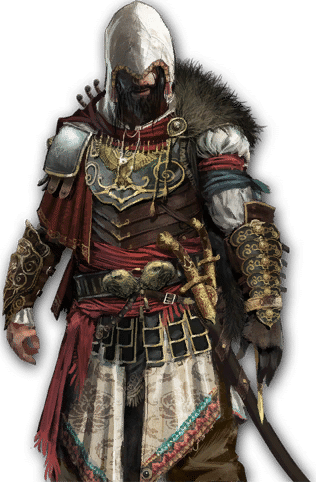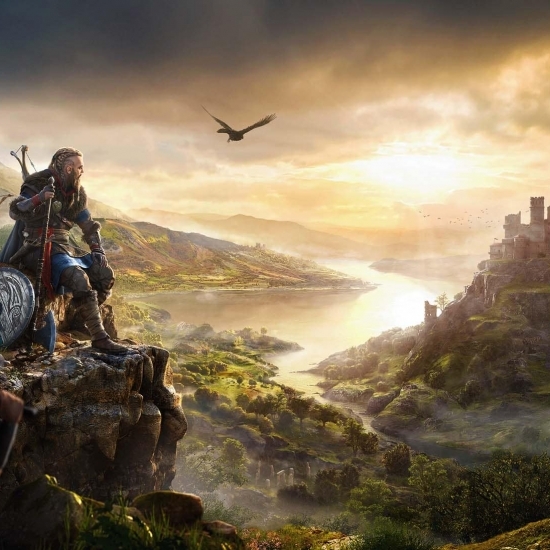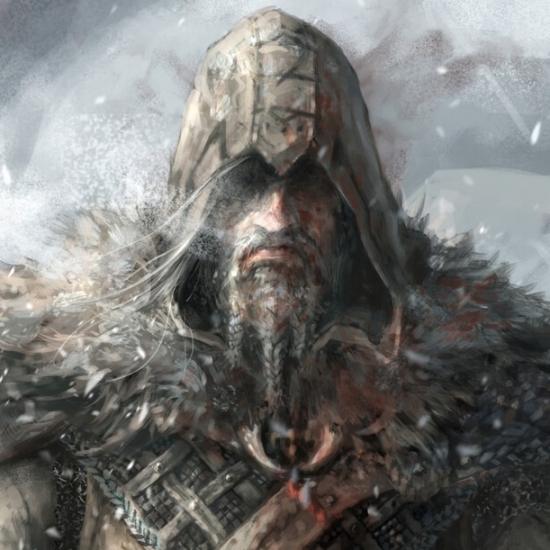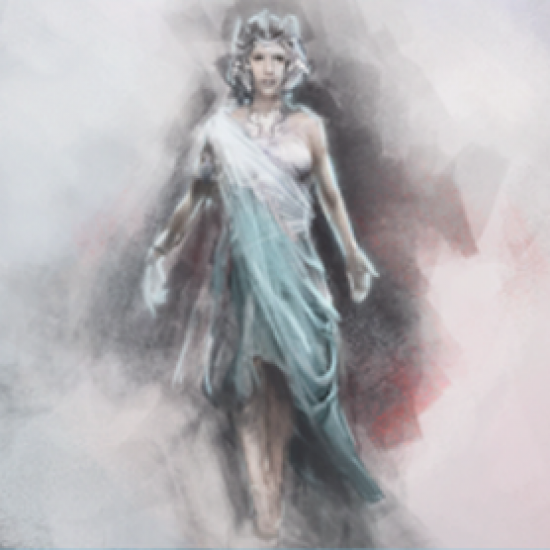MITHRAISM
Mithraism, also known as the Mithraic mysteries, was a Roman mystery religion centered on the god Mithras. The religion was inspired by Iranian worship of the Zoroastrian divinity Mithra, although the Greek Mithras was linked to a new and distinctive imagery, and the level of continuity between Persian and Greco-Roman practice is debated.[a] The mysteries were popular among the Imperial Roman army from about the 1st to the 4th century CE.
Worshippers of Mithras had a complex system of seven grades of initiation and communal ritual meals. Initiates called themselves syndexioi, those “united by the handshake”. They met in underground temples, now called mithraea (singular mithraeum), which survive in large numbers. The cult appears to have had its centre in Rome, and was popular throughout the western half of the empire, as far south as Roman Africa and Numidia, as far north as Roman Britain, and to a lesser extent in Roman Syria in the east.
Mithraic initiates were required to swear an oath of secrecy and dedication,[56] and some grade rituals involved the recital of a catechism, wherein the initiate was asked a series of questions pertaining to the initiation symbolism and had to reply with specific answers. An example of such a catechism, apparently pertaining to the Leo grade, was discovered in a fragmentary Egyptian papyrus, and reads:
| Verso
[…] He will say: ‘Where […]?’ ‘[…] is he at a loss there?’ Say: ‘[…]’ […] Say: ‘Night’. He will say: ‘Where […]?’ […] Say: ‘All things […]’ ‘[…] are you called?’ Say: ‘Because of the summery […]’ […] having become […] he/it has the fiery ones ‘[…] did you receive?’ Say: ‘In a pit’. He will say: ‘Where is your […]?’ ‘[…] [in the] Leonteion.’ He will say: ‘Will you gird […]?’ ‘[…] death’. He will say: ‘Why, having girded yourself, […]?’ […] this [has?] four tassels. |
Recto
Very sharp and […] […] much. He will say: ‘[…]?’ ‘[…] of the hot and cold’. He will say: ‘[…]?’ ‘[…] red […] linen’. He will say: ‘Why?’ Say: […] red border; the linen, however, […] ‘[…] has been wrapped?’ Say: ‘The savior’s […]’ He will say: ‘Who is the father?’ Say: ‘The one who [begets] everything […]’ [He will say: ‘How] did you become a Leo?’ Say: ‘By the […] of the father […]’ Say: ‘Drink and food’. He will say: ‘[…]?’ […] in the seven-[…] |
SCRIPTURE AND REPRESENTATION
Almost no Mithraic scripture or first-hand account of its highly secret rituals survives; with the exception of the aforementioned oath and catechism, and the document known as the Mithras Liturgy, from 4th century Egypt, whose status as a Mithraist text has been questioned by scholars including Franz Cumont. The walls of mithraea were commonly whitewashed, and where this survives it tends to carry extensive repositories of graffiti; and these, together with inscriptions on Mithraic monuments, form the main source for Mithraic texts.
Soldiers were strongly represented amongst Mithraists, and also merchants, customs officials and minor bureaucrats. Few, if any, initiates came from leading aristocratic or senatorial families until the ‘pagan revival’ of the mid-4th century; but there were always considerable numbers of freedmen and slaves.
Mithraism is viewed as a rival of early Christianity. In the 4th century, Mithraists faced persecution from Christians and the religion was subsequently suppressed and eliminated in the empire by the end of the century.
After the acceptance of Christianity by the emperor Constantine in the early 4th century, Mithraism rapidly declined.
LINGERING QUESTIONS
The statue of the God Mithras, the God of Light, made an appearance in the newly released Assassin’s Creed Valhalla story trailer, with hooded figures in front of it and the voice of the newly introduced Hidden One, Basim stating: “There’s conquests have given you a home, but there’s more to this land, Eivor. A darkness unseen, an unknowable threat, one that is bound to England’s destiny and to yours”.
In addition to that, Assassin’s Creed Odyssey teased a sword in a stone in the form an Easter Egg atop the mountains near Sparta. The Easter Egg was taken as a hint for the Dark Ages setting which we now confirmed to be the setting of Valhalla. In the Assassin’s Creed lore, the Sword in the Stone, Excalibur is a Sword of Eden, an an ancient advanced technology of the First Civilization / Isu.
Like any Assassin’s Creed title, Valhalla will quite likely involve the Isu lore and Pieces of Eden. Therefore, in light of the above information, we are left with multiple questions, could the Cult of Mithras be somehow related to the Order of the Ancients and the Cult of Kosmos from Origins and Odyssey, respectively especially with the Order of the Ancients officially confirmed to be present in Valhalla?
Another interesting bit is back in Assassin’s Creed Unity, there’s a mention of an unidentified Roman Assassin during the rise of the emperor Constantine I. This Assassin’s genetic memories were used by Abstergo Industries in 2014 for the video game “The Bladed Cross” released through the Helix Navigator, and teased in Abstergo’s Employee Handbook with the tagline: “We are in 330 AD, and the Roman Empire, besieged and decadent, is at a crossroads. But a man will rise above the darkness to forge the destiny of his people. Witness the birth of Constantinople and spend time with the man who had dreamed it, the emperor Constantine I.”
In addition, Assassin’s Creed Origins introduced us to Aya / Amunet who proceeded to set the foundations of the Hidden Ones in Rome after assassinating Caesar. All of this leaves us with a wealth of connections between the lore and the Roman Empire which is confirmed to be part of Valhalla’s world in the form of Roman ruins with certain secrets to find.
Many thanks to xMusti070 for the assistance in creating this article and the wealth of information within.

 RINO THE BOUNCERPharmacist. Visual Artist. Ubisoft Star Player, Assassin's Creed Brand Ambassador, Founder and Community Leader of The Codex. Tomb Raider Localization Ambassador and Official Fansite Founder.NEWS FEEDTestimonial"Just stumbled across this site after looking at some topics on the Ubisoft Forums, this is great! Exactly the thing I was looking for.""Your site lays everything down in an interesting and easy to read format, even I learn new things whilst reading your articles!""This needs more than just 5 stars!""There is only one word AMAZING!!!!!!! GREAT WORK.""Very in depth and very well thought out! Keep up the good work!"One of the best (if not the best one) AC community pages out there. Keep up the good work!
RINO THE BOUNCERPharmacist. Visual Artist. Ubisoft Star Player, Assassin's Creed Brand Ambassador, Founder and Community Leader of The Codex. Tomb Raider Localization Ambassador and Official Fansite Founder.NEWS FEEDTestimonial"Just stumbled across this site after looking at some topics on the Ubisoft Forums, this is great! Exactly the thing I was looking for.""Your site lays everything down in an interesting and easy to read format, even I learn new things whilst reading your articles!""This needs more than just 5 stars!""There is only one word AMAZING!!!!!!! GREAT WORK.""Very in depth and very well thought out! Keep up the good work!"One of the best (if not the best one) AC community pages out there. Keep up the good work!






